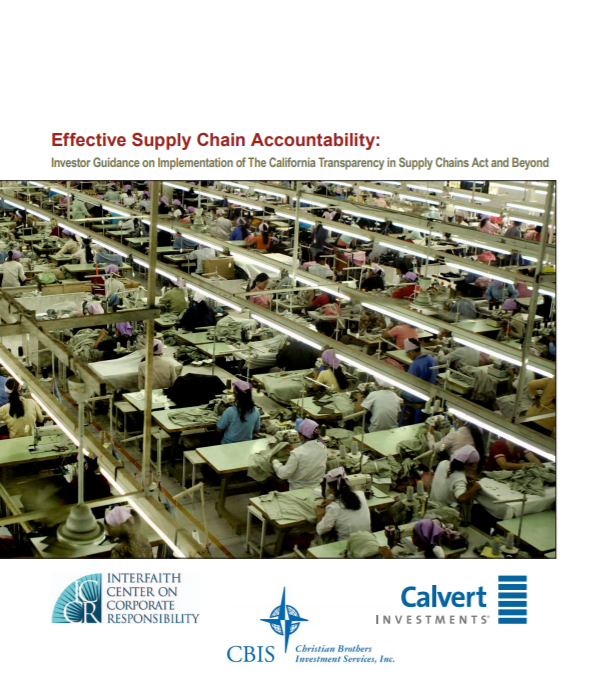This document provides guidance for—and strongly encourages—companies to go beyond minimum compliance with The California Transparency in Supply Chains Act (SB 657) by implementing a comprehensive human rights framework. While SB 657 is focused specifically on human trafficking, the information in this document can help companies address a wide range of human rights issues. This guide is especially beneficial for companies that are new to social compliance, but can also benefit those with existing systems to address human rights risks.
The information in this document includes a brief summary of the law, the business case for compliance, shareholder expectations, and the key elements of a comprehensive human rights due diligence framework.

